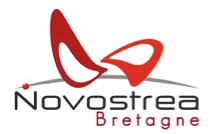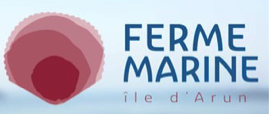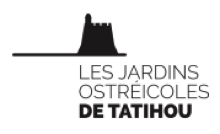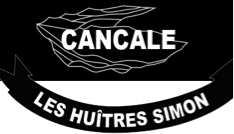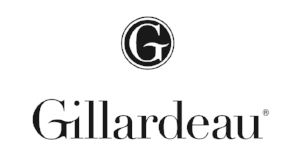Synthèse
à la compréhension de ce marché
Détail du contenu
 Informations
Informations
- Nombre de pages : 30 pages
- Format : Version digitale et PDF
- Dernière mise à jour : 01/09/2023
 Sommaire et extraits
Sommaire et extraits
1 Market overview
1.1 Definition of the oyster market :
According to the Larousse the oysters are " bivalve marine molluscs, edible, fixed to sea rocks by a valve in their shell, which are farmed (oyster farming) in parks and whose species (Belon, Portuguese, etc.) are mainly eaten during the "r" months (September to April), outside the breeding period »
The first cultures of flat oysters developed as early as the 17th century in France, taking advantage of the loss of the role of salt as a currency, which then freed the salt marshes [ stephanedecotterd.com ] . Spat (larvae) resources were exhausted in France as early as 1850. Portuguese hollow oysters then became the majority in France (up to 80% of the production in 1960). Decimated by a disease in the 1970s, it has been replaced by the Japanese hollow oyster since then. The latter remains the most cultivated oyster in France today. There are two main types of oysters, the flat and the hollow. Since 2008, a new epizootic disease has been affecting young French oysters The oyster farming activity is therefore subject to strong risks that impact its economy.
Oyster farming makes part of the shellfish farming business which refers to the farming of any edible shellfish: mussels, oysters, cockles, clams, scallops, abalones. More broadly, oysters are commonly classified as seafood (molluscs and crustaceans) The oyster market is therefore a sub-segment of the seafood market and more broadly of the aquatic products market .
 Liste des graphiques
Liste des graphiques
- Recherches en utilisant le mot-clé "Huître" sur Google.fr
- Taux de pénétration des huîtres fraîches
- Principaux acheteurs de coquillages
- Prix moyen des huîtres fraîches
- Valeur de la dépense moyenne d'un ménage pour des huîtres fraîches
Toutes nos études sont disponible en ligne et en PDF
Nous vous proposons de consulter un exemple de notre travail d'étude sur un autre marché !
Dernières actualités
Entreprises citées dans cette étude
Cette étude contient un panorama complet des entreprises du marché avec les derniers chiffres et actualités de chaque entreprise :
 Choisir cette étude c'est :
Choisir cette étude c'est :
Accéder à plus de 35 heures de travail
Nos études sont le résultat de plus de 35 heures de recherches et d'analyses. Utiliser nos études vous permet de consacrer plus de temps et de valeur ajoutée à vos projets.
Profiter de 6 années d'expérience et de plus de 1500 études sectorielles déjà produites
Notre expertise nous permet de produire des études complètes dans tous les secteurs, y compris des marchés de niche ou naissants.
Notre savoir-faire et notre méthodologie nous permet de produire des études avec un rapport qualité-prix unique
Accéder à plusieurs milliers d'articles et données payantes
Businesscoot a accès à l'ensemble de la presse économique payante ainsi qu'à des bases de données exclusives pour réaliser ses études de marché (+ 30 000 articles et sources privées).
Afin d'enrichir nos études, nos analystes utilisent également des indicateurs web (semrush, trends…) pour identifier les tendances sur un marché et les stratégies des entreprises. (Consulter nos sources payantes)
Un accompagnement garanti après votre achat
Une équipe dédiée au service après-vente, pour vous garantir un niveau de satisfaction élevé. (+33) 9 70 46 55 00
Un format digital pensé pour nos utilisateurs
Vous accédez à un PDF mais aussi à une version digitale pensée pour nos clients. Cette version vous permet d’accéder aux sources, aux données au format Excel et aux graphiques. Le contenu de l'étude peut ainsi être facilement récupéré et adapté pour vos supports.
 Nos offres :
Nos offres :
the oyster market | France
- Quels sont les chiffres sur la taille et la croissance du marché ?
- Quels leviers tirent la croissance du marché et leur évolution ?
- Quel est le positionnement des entreprises sur la chaine de valeur ?
- Comment se différencient les entreprises du marché ?
- Données issues de plusieurs dizaines de bases de données
Pack 5 études (-15%) France
- 5 études au prix de 75,6€HT par étude à choisir parmi nos 800 titres sur le catalogue France pendant 12 mois
- Conservez -15% sur les études supplémentaires achetées
- Choisissez le remboursement des crédits non consommés au terme des 12 mois (durée du pack)
Consultez les conditions du pack et de remboursement des crédits non consommés.
- 05/04/2024 - Ajout des informations de l'entreprise Cultimer
- 10/03/2024 - Ajout des informations de l'entreprise Huîtres Geay
- 28/11/2023 - Ajout des informations de l'entreprise CNG Emballages
- 03/09/2023 - Mise à jour des données financières de l'entreprise Whirlpool
- 09/07/2023 - Ajout des informations de l'entreprise Maison Thaëron
- 04/07/2023 - Ajout des informations de l'entreprise Yvon Madec
- 01/07/2023 - Ajout des informations de l'entreprise David Hervé
- 01/07/2023 - Ajout des informations de l'entreprise Cadoret
- 01/07/2023 - Ajout des informations de l'entreprise Huîtres de Cancale
- 01/07/2023 - Ajout des informations de l'entreprise Marennes-Oléron
- 01/07/2023 - Ajout des informations de l'entreprise Maison Legris
- 01/07/2023 - Ajout des informations de l'entreprise Huîtres Papin
- 21/05/2023 - Mise à jour des données financières de l'entreprise Whirlpool
- 11/05/2023 - Ajout des informations de l'entreprise Gillardeau Maison
- 21/02/2023 - Mise à jour des données financières de l'entreprise Pomona Terrazur
- 20/02/2023 - Mise à jour des données financières de l'entreprise Whirlpool
- 03/02/2023 - Ajout des informations de l'entreprise Whirlpool
- 13/01/2023 - Ajout des informations de l'entreprise Mericq Groupe





 Avec ses poches ostréicoles, CNG Emballages part à la conquête de l'Amérique - 28/11/2023
Avec ses poches ostréicoles, CNG Emballages part à la conquête de l'Amérique - 28/11/2023


